
Technology
14:55, 25-Feb-2019
World's smartphone manufacturers launch latest products at MWC
CGTN
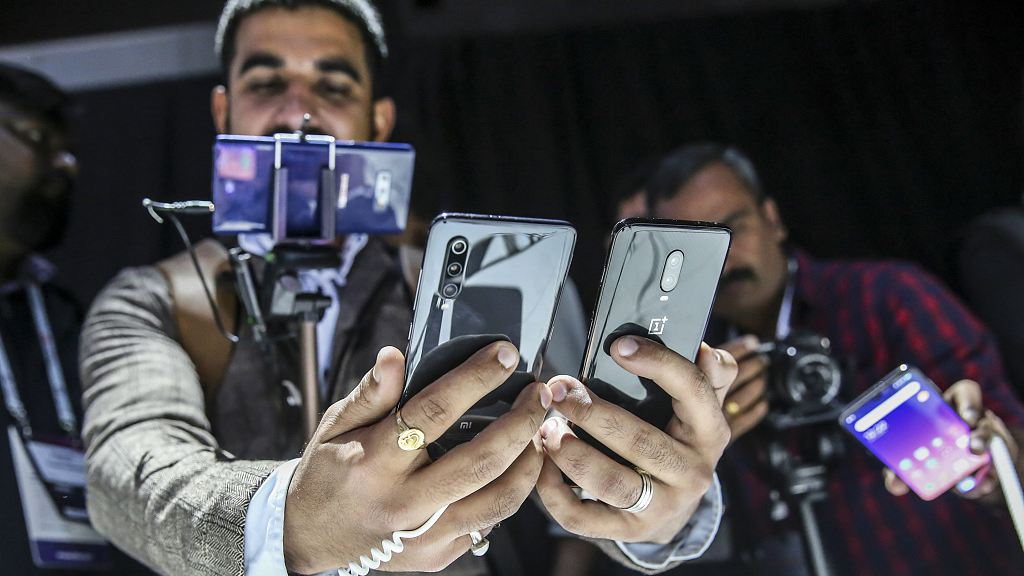
As the Mobile World Congress (MWC) 2019, one of the world's most influential feasts in the mobile industry, kicks off on Monday in Barcelona, manufacturers are unveiling their latest products and cutting-edge technologies.
China's Xiaomi has launched its contribution to a new wave of smartphones that will be able to take advantage of faster 5G mobile networks at a lower price than analysts expect from rivals such as Samsung.
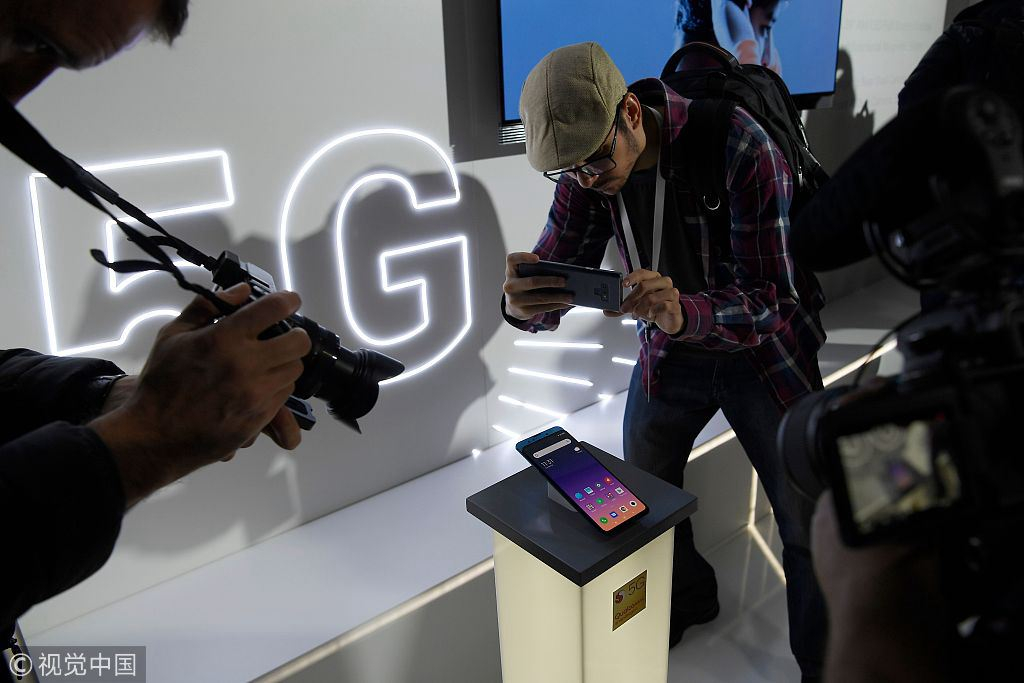
Xiaomi Corporation's new smartphone Mi MIX3 5G. /VCG Photo
Xiaomi Corporation's new smartphone Mi MIX3 5G. /VCG Photo
The world's fourth-largest smartphone maker unveiled the handset Mi MIX3 on Sunday, trumpeting prices starting from 680 U.S. dollars when it hits the market in May, prompting gasps in the hall at the mobile industry's biggest global event in Barcelona.
"We announced a very, very aggressive price," Xiaomi Senior Vice President Xiang Wang told Reuters. "We want to drive 5G to normal consumers, so more and more people can afford to buy it."
The next-generation wireless technology promises to ratchet up Internet speed and support an "Internet of Things" in which embedded chips enable the creation of smart networks of vehicles, household devices and more.
"5G is here, not in 2020, not late 2020; it's here right now in 2019," said Cristiano Amon, president of chipmaker Qualcomm, which supplies Xiaomi.
LG's new phones: 5G, biometric breakthrough
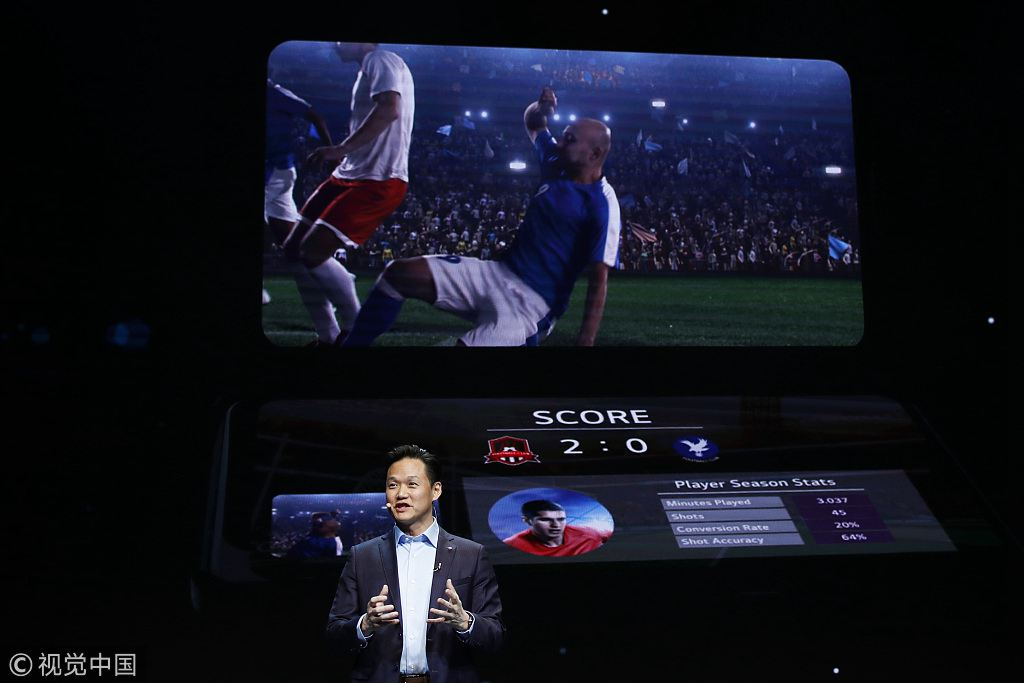
Frank Lee, director of brand marketing at LG Electronics Mobilecomm U.S.A. Inc., presents the V50 ThinQ 5G smartphone. /VCG Photo
Frank Lee, director of brand marketing at LG Electronics Mobilecomm U.S.A. Inc., presents the V50 ThinQ 5G smartphone. /VCG Photo
South Korea's LG Electronics unveiled a 5G smartphone on Sunday with a dual screen.
The two screens on the new V50ThinQ work independently, so a user can watch a film on one screen while browsing the Internet on the other.
The company nevertheless retains a following among those who value good video and audio quality.
Addressing those users, LG launched a second phone, the G8ThinQ, which can be unlocked without touching the screen. The handset instead uses light sensors to scan the veins in a user's hand or to recognize their face.
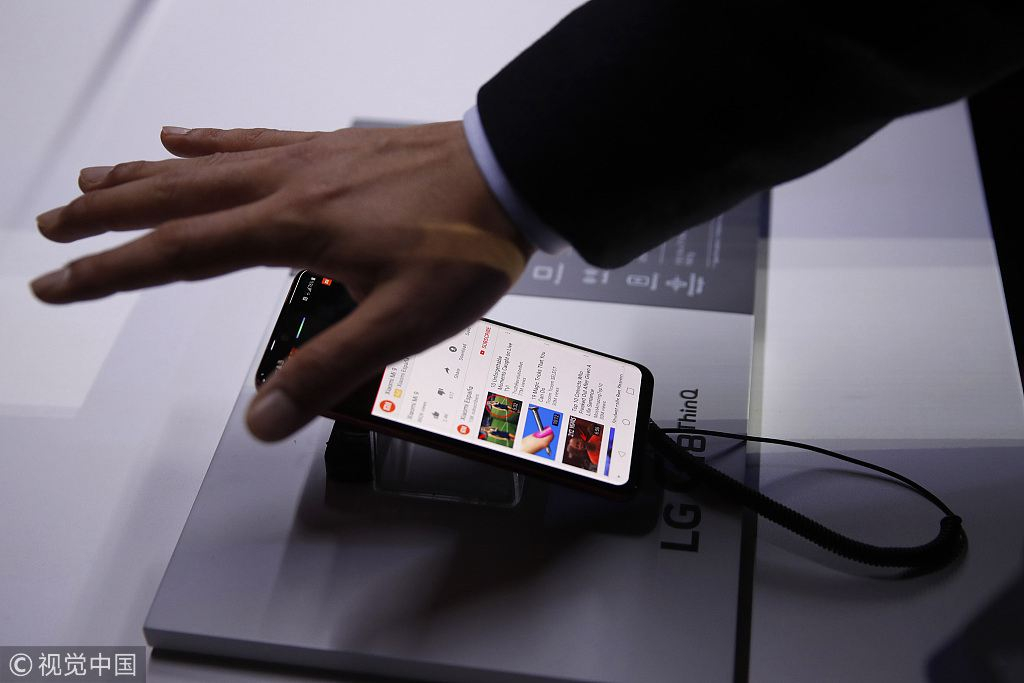
An attendee demonstrates the hand gesture features of a G8 ThinQ smartphone on display. /VCG Photo
An attendee demonstrates the hand gesture features of a G8 ThinQ smartphone on display. /VCG Photo
The phone's front-facing camera, which uses a sensor chip developed by Germany's Infineon Technologies, can scan in three dimensions – making it more secure than existing biometric methods of unlocking phones such as fingerprints.
Users can also activate features with gestures – for example to play or pause a song or video, or adjust the volume, by twisting their fingers, emulating the character played by Tom Cruise in science-fiction detective thriller Minority Report.
Nokia 9 PureView: 1 smartphone, five cameras
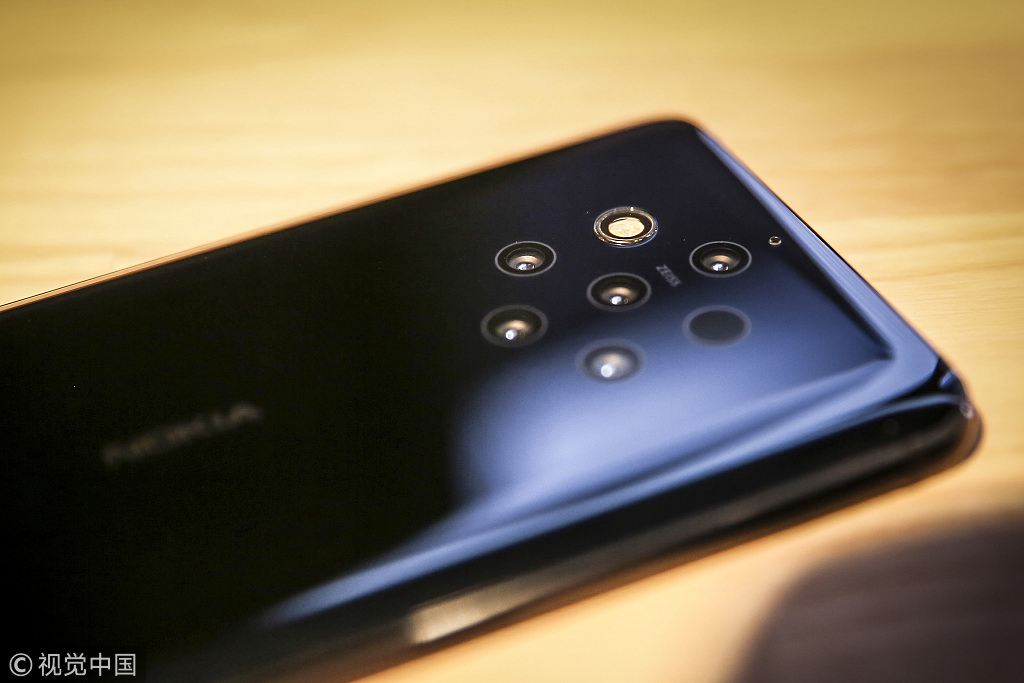
A Nokia 9 PureView smartphone featuring an array of five camera lenses. /VCG Photo
A Nokia 9 PureView smartphone featuring an array of five camera lenses. /VCG Photo
HMD Global, the Finnish company which owns the rights to use the Nokia brand for mobile phones, has launched a smartphone with an array of five camera lenses designed to appeal to camera enthusiasts.
The Nokia 9 PureView heads a range of smartphones announced by HMD on Sunday, including an entry-level and two mid-level handsets, all designed to work with Google's Android One, which guarantees two years' of operating system upgrades.
The company was showing it could innovate by delivering the world's first five-camera array system in a smartphone, Chief Executive Florian Seiche said in an interview.
It also refreshed its devices in the mid-market, where it already has a top-five ranking in many markets, and introduced a feature phone – the Nokia 210 – able to connect to the Internet using an Opera Mini browser, priced at an average 35 U.S. dollars.
Seiche said the Nokia range would serve users, particularly in emerging markets, from feature phones to mid-market devices.
He said the mid-market Nokia 3.2 and Nokia 4.2 also appealed to users who wanted good value combined with the simplicity of a "pure" Android operating system, unencumbered with software installed by the device maker and with guaranteed upgrades.
The Nokia 9 PureView will be available from March at an average price of 699 U.S. dollars, and both the Nokia 3.2 and 4.2 will be available in April, from 139 U.S. dollars and 169 U.S. dollars respectively.
(Cover image via VCG)
Source(s): Reuters

SITEMAP
Copyright © 2018 CGTN. Beijing ICP prepared NO.16065310-3
Copyright © 2018 CGTN. Beijing ICP prepared NO.16065310-3